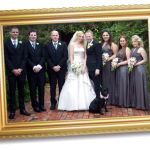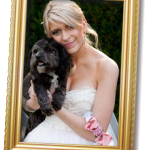The simple answer is that they probably have more in common with other breeds of dog than differences. Especially when it comes to behaviour.
Physiologically there are differences between Greyhounds and the domestic dog. Your vet should be well aware of their differences and can explain them to you. From a behavioural point of view, they are pretty much the same as other dogs.
So why do people perceive them as different? I can only suggest some theories based on my experience living with and working with greyhounds in domestic environments, and I believe it all stems from these two main issues – so here goes:
BSL – Breed Specific Legislation
Possibly the oldest form of breed specific legislation is attached to greyhounds, this varies from state to state and country to country, check the laws with your local council but in general, greyhounds are required to be muzzled in public unless they have received an exemption and kept on lead at all times that they are in public here in Victoria, Australia.
Greyhound owners will recount stories of being asked if their dog is vicious because it is wearing a muzzle, as well as being questioned when dogs are legally without a muzzle. Greyhounds pose no greater threat to the public or other dogs than general domestic breeds.
Many organisations are working to change the current legislation surrounding domestic greyhounds – you can read more about the work being done here – https://www.parliament.vic.gov.au/images/stories/committees/SCEI/Dogs_Inquiry/Subs/Submission_36_-_Greyhound_Equality_Society.pdf
Upbringing
At present, Greyhounds are bred to “work” (run). There are some parts of the racing industry that is worried about early domestic socialisation affecting a dog’s desire to run competitively. This is not true, but changing people’s views takes time. Domestic socialisation is also logistically difficult when you have many dogs to look after. It is still important though and should be encouraged.
Many Greyhounds are cared for in a kennel or rearing yard environment with regular exercise, shelter and food for the first 12m of their lives, as well as living with other Greyhounds. After this they are taken to a trainer for racing training. Their exposure to normal dog life is limited quite often.
Due to deficits in their early socialisation periods, when Greyhounds are introduced to domestic life after 12m they can become easily overwhelmed while their brains learn about things like shiny floors, toileting outside, stairs, trams and trains, other breeds of dogs, family life and often living independently. This can cause an increase in displacement (stress) behaviours.
So – if you have welcomed a greyhound into your family or are planning to do so, here are some tips:
- Find out as much as you can about your Greyhound’s history. If you need to call in a Canine Educator, then having as much background as possible is always helpful. Here are some questions to ask:
- Wh s/he receive any domestic socialisation
- What were my dog’s experiences of the world between 16 weeks and 12 months?
- Are you aware of any incidents with other dogs or people?
- Has my dog ever lived on its own?
- Where did my dog sleep?
- What sort of transition did my dog have before coming into domestic life? Was there foster care? – Can I have a copy of the foster carer’s report?
- What sort of exercise is my dog currently used to?
- Connect with fellow dog and Greyhound lovers in your area. They are an invaluable source of information for day to day advice, and an amazing community to connect with for dog walks and outings.
- Start small. Especially if your greyhound is new to domestic life, don’t take your on outings that are too far outside his or her physical or mental fitness level.
- Remember that walking is mentally and physically tiring for your dog, start out on short walks with low distraction and follow your dog’s lead – many greyhounds are fine to keep going. But if you start with shorter outings, then it is easy to increase the D’s. Duration, distance, distraction.
- Find out what your dog has been eating and how much, slow transitions to new food are always advised.
In my experience with Greyhounds these are the two main contributing issues to Greyhounds who have trouble adjusting to domestic life; the public bias due to the BSL, and the lack of early domestic socialisation experiences. Most greyhounds just need a little extra support and their guardians little extra education to learn to read their dog’s body language cues and, with time and patience, they adjust beautifully to domestic life.
We also need to educate the racing industry about the importance of early domestic socialisation. I believe that there are many trainers out there who would be saddened to hear that missing such a simple step in their pups’ lives can impact on their ability to adjust to domestic life.
If you would like more tips about adopting a greyhound, I have written a flyer which is available on my website, here: http://formaldogs.com.au/wp-content/uploads/2017/07/FormalDogs-GreyhoundAdoption.pdf
To book a Greyhound training session (with complimentary follow up for those in the Melbourne area) please click on the link below and I will be in touch as soon as possible.
- Training sessions are available Thursday – Saturday.
- I am also available for education and training seminars for small and large groups.
- If you are a racing trainer or breeder and would like to know more about how you can help your pups have an easier transition to domestic life after racing please also contact me.
http://formaldogs.com.au/contact-us/
Oh, and if you do decide to adopt a Greyhound. Welcome to the community, they are the most amazing dogs!
Ruth




